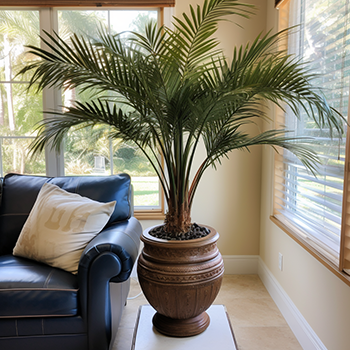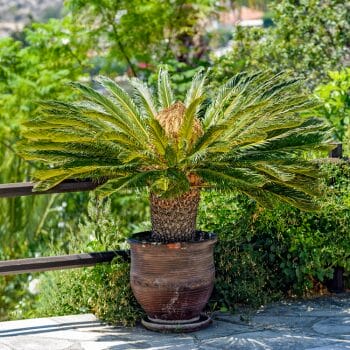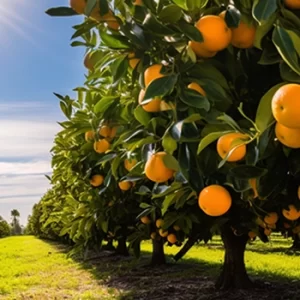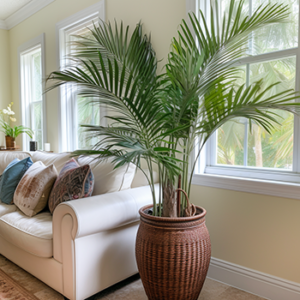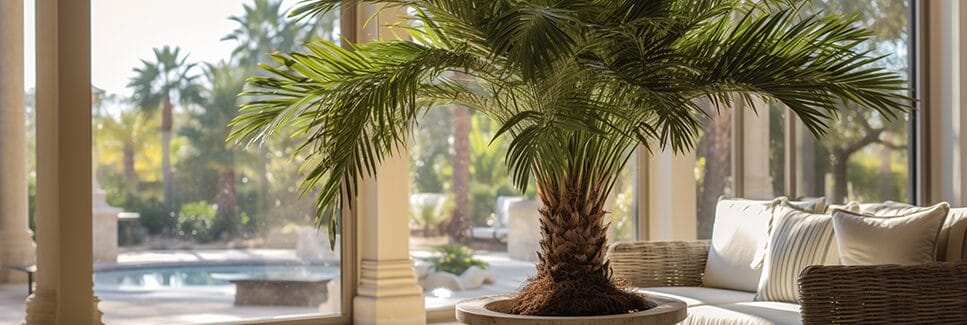
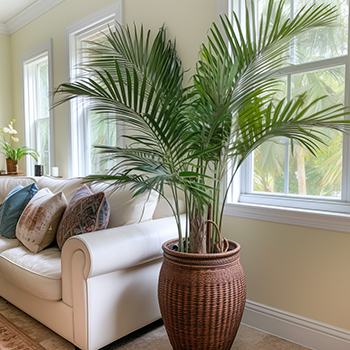
5 Types of Palm Plants in Florida that Grow Indoors
These 5 types of Palm Plants in Florida that Grow Indoors will bring tropical beachy happiness to your indoor living!
Palm plants are the epitome of tropical elegance and are a perfect choice for bringing a touch of the beach into your home decor. Their lush, green fronds and graceful forms can transform any indoor space into a serene, tropical retreat.
In this blog post, we’ll explore the best and most popular palm plants that can grow indoors, remain relatively small, and provide a tropical decor vibe to your living space.
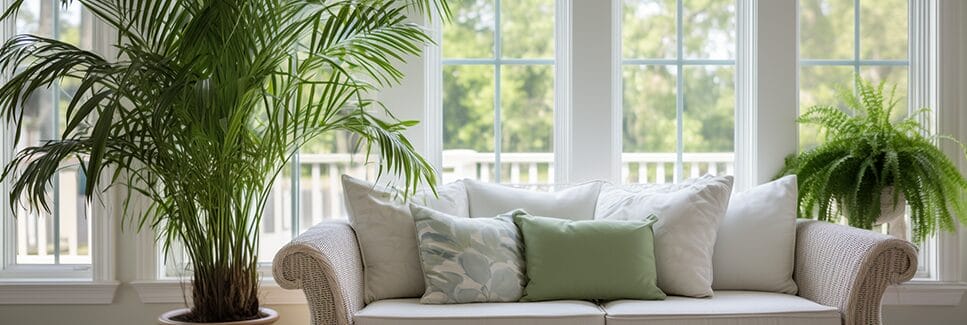
The Appeal of Indoor Palm Plants
Indoor palm plants offer several benefits that make them appealing for home decor:
- Aesthetic Value: Their lush, green fronds create a serene and tropical atmosphere.
- Air Purification: Many indoor palms help improve air quality by filtering pollutants.
- Low Maintenance: Once established, indoor palms require minimal care.
- Versatility: They can be placed in various indoor settings, from living rooms to offices and because they can be grown in containers, simply place them outdoors in sunlight when they need it. Easy!
5 Most Popular Indoor Palm Plants
Parlor Palm (Chamaedorea elegans)
- Excellent houseplant
- Grows up to 4-6 feet tall indoors
- Grows well in containers by a sunny window
- Great air purifying plant
- Appeal: The Parlor Palm is one of the most popular indoor palms due to its ability to thrive in low light and low humidity. Its elegant, feathery fronds make it a beautiful addition to any indoor space. It grows slow, does well without lots of sun, and is pet-friendly.
As an Amazon Associate I may earn from qualifying purchases at no additional cost to you.
Areca Palm (Dypsis lutescens)
- Great houseplant
- Reaches 6-8 feet tall indoors
- Grows well in a container near a sunny window
- They help improve air quality and considered pet-friendly
- Appeal: Known for its bright, arching fronds, the Areca Palm is a favorite for indoor gardening. It can tolerate indirect light and moderate humidity, making it ideal for living rooms and offices. If they’re happy and well taken care of, they’ll live about 10 years in a container pot.
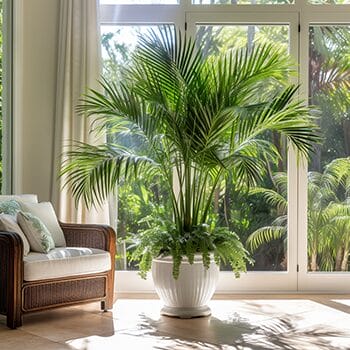
No products found.
Kentia Palm (Howea forsteriana)
- Good houseplant for a larger space
- Grows up to 10 feet tall indoors
- Known for acting as an excellent air purifier
- Non-toxic and pet-friendly
- Indirect sunlight
- Appeal: The Kentia Palm is prized for its graceful, drooping fronds and ability to thrive in low light conditions. It’s a perfect choice for adding a touch of elegance to large rooms and foyers.
Dwarf Pygmy Date Palm (Phoenix roebelenii)
- Grows best by a window with direct morning sun
- Typically grows 4-6 feet tall indoors
- Excellent air purifier
- Grows best in higher humidity levels
- Non-toxic and pet-friendly
- Appeal: This small palm has a delicate, airy appearance with arching fronds and a slender trunk. It’s well-suited for indoor containers and can add a tropical feel to any room.
Sago Palm (Cycas revoluta)
- Loves morning sun
- Grows slowly and can live many years
- Can be toxic if ingested in large quantities
- Appeal: Despite its name, the Sago Palm is actually a cycad. Its stiff, glossy fronds and compact size make it a striking houseplant that can be placed on tables or floor stands.
Caring for Indoor Palm Plants
These types of palm plants in Florida can thrive indoors with the proper care. Follow these care tips:
- Light: Most indoor palms prefer bright, indirect light. Avoid direct sunlight, which can scorch the leaves.
- Watering: Keep the soil consistently moist but not waterlogged. Overwatering can lead to root rot.
- Humidity: Palms prefer higher humidity levels. If your home is dry, consider using a humidity tray or misting the leaves regularly.
- Temperature: Maintain a consistent temperature between 65-75°F. Avoid placing palms near drafts or heating vents.
- Fertilizing: Feed your palm with a balanced liquid fertilizer every 4-6 weeks during the growing season.
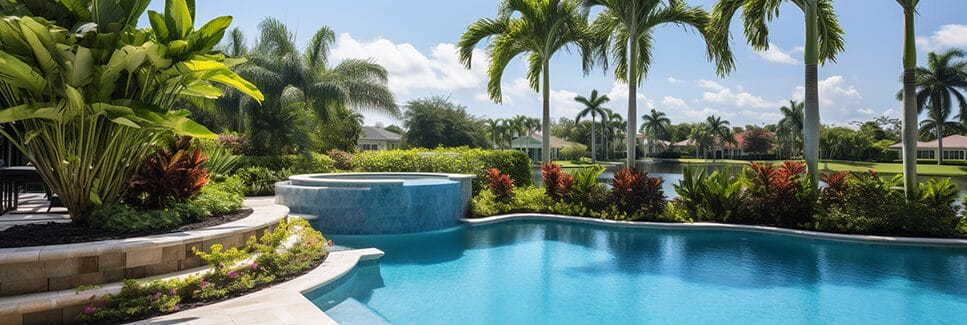
While we’ve covered a variety of palm plants perfect for Florida landscapes, there’s a broader array of palm tree species to explore.
In an upcoming blog post, we will delve deeper into the diverse species of palm trees found throughout Florida, including their specific growing requirements, landscape uses, and unique characteristics.
Stay tuned for an in-depth look at these magnificent trees and their role in Florida’s natural and cultivated environments.
We think you may also like…




